|
111. Argynnis adippe (Denis & Schiffermüller, 1775) / High brown fritillary / Nymphalidae –Heliconiinae
NL: bosrandparelmoervlinder, adippevlinder / D: Märzveilchenfalter, Feuriger Perlmutterfalter / F: moyen nacré
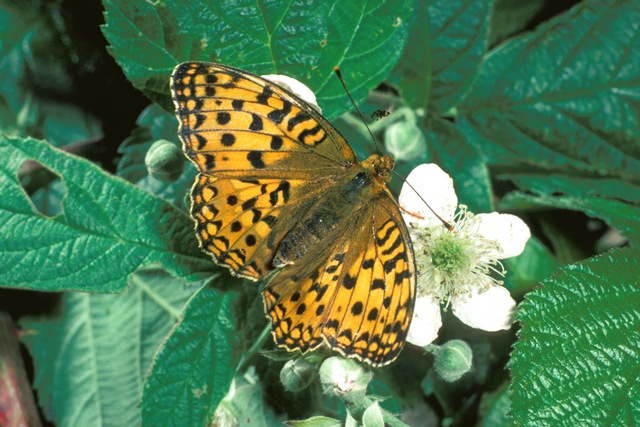 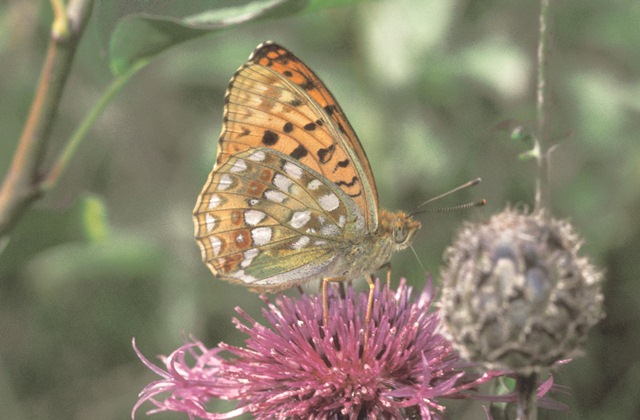 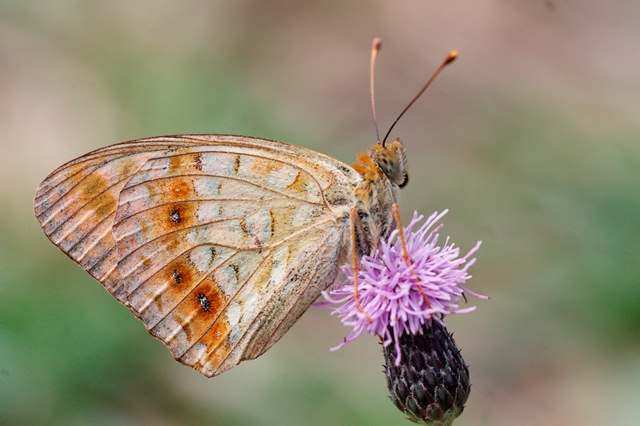
Photographs: Frits Bink, Frits Bink, Jeroen Voogd ©.
Medium-sized or large, wing length 28 (24-31) mm. In the Benelux this species occurs in woodland and scrubland and is widely spread in Luxemburg and Wallonia, in Flanders and the Netherlands only known as a vagrant.
Butterfly is on the wing from mid-June until end-August. The species is known from maritime and severe continental climates, amplitude 6 to 20. Required heat sum 400°d and maximum tolerated 2000°d, corresponding climate windows 19 and 38 weeks.
The species resembles the woodland species Argynnis paphia in ecology and behaviour; A. adippe is an inhabitant of the wood edges and adjoining grassland.
In England the species is the subject of conservation. Before the 1950’s it occurred rather commonly in the south but it declined rapidly caused by the change in landscape and woodland exploitation. Re-establishment of coppice and grazing are promoted to improve the habitat for this species (Asher et al. 2001: 223).
Ecological characteristics
Behaviour over time
Overwintering: egg, the larva already developed inside the egg shell.
Reproduction: oviposition starts after 8-10 days when the body contains 45 (40-50) eggs, estimated potential production 4.9 times as much.
Larval feeding periods: 60 (53-76) days in period early-April until early-July.
Generations: one.
Spreading of risk: not observed.
Life cycle: egg 27-36 weeks; larva 8-10 weeks; pupa 20 (14-28) days.
Life span of adult: very long, 5 weeks.
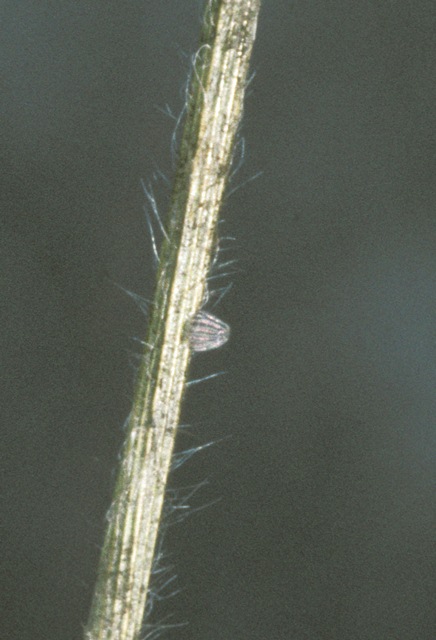 
Photographs: Frits Bink ©.
Behaviour in space
From stay-at-home to migrant: stay-at-home, spatial requirement considerable.
Finding a mate: male patrols.
Orientation in the landscape: gradient from wood to tall grassland.
Oviposition: on any object close to violets.
Defence
Threats from other organisms: larvae is armoured with large spines, pupa decorated with silvery spots, hidden in a tent like shelter.
Threats from the environment: rather vulnerable, butterfly stays most of the time in mild environment of the wood edge, larvae need open places to bask.
Feeding habits
Adult: nectar, all kind of flowers in the wood fringe.
Larva: selects a place where it can bask and has the violets around and where it can feed intermittently.
Larval foodplants
Plant species: Violaceae, Viola hirta, V. odorata, V. reichenbachiana, V. riviniana, V. tricolor.
Journal
Rearing experiment based on specimen from la Courtine, France:
5 September 1980: female captured and had laid eggs. None of these eggs hatched before overwintering.
Overwintered outdoors.
5 April 1981: one larva seen on Viola hirta in the container.
9 May: one larva 10 mm in length, another 6 mm.
1 June: one larvae nearly fully grown.
5 June: pupated.
25 June: first adult appeared.
Table 111-1. Results of dissections

Table 111-2. Collection and observation localities
B, Ethe, 240 m, 49° 36’ 25”N – 5° 35’ 50”E; 11 July 1984.
D, Steigerwald, 49° 39’N – 10° 23’E; 24 July 1984.
F, Aurel, 400 m, 44° 43’N – 5° 16’E; 29 August 1984, 2 September 1984.
F, la Bruyère, 45° 39’ 01”N – 5° 38’ 09”E; 25 August 1984, 3 September 1984.
F, La Courtine, 45° 45’N – 2° 15’E; 5 September 1980.
F, Haut-Languedoc, 43° 29’N – 8° 45’E; 28 September 1980.
F, Lorraine, Rupt devant Saint-Mihiel, 280 m, 48° 53’ 01”N – 5° 24’ 10”E; 28 June 2006.
F, Vallouise, 1200 m, 44° 51’ 18”N – 6° 29’ 28”E, 3 September 1982 (old females only).
S, Gotland, Buttle, 57° 25’ 09”N – 18° 34’ 38”E; 18 July 1982.
S, Gotland, Klinteklinten, 57° 40’ 14”N – 18° 46’ 26”E; 13 July 2004 (fresh males only).
S, Öland, Borg, 56° 40’ 04”N – 16° 36’ 05”E; 10 July 1982 (fresh males only).
Fig. 111-1. Argynnis adippe, phenogram adapted from Fichefet et al. 2008: 173.
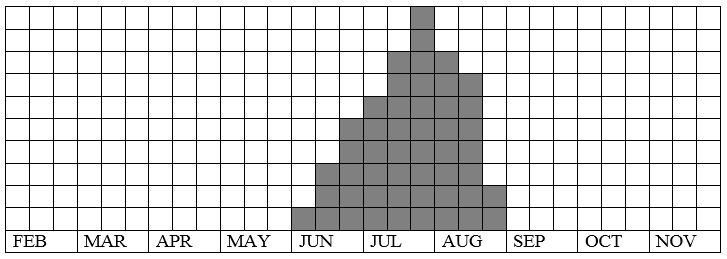
Fig. 111-2. Argynnis adippe, habitat characteristics.
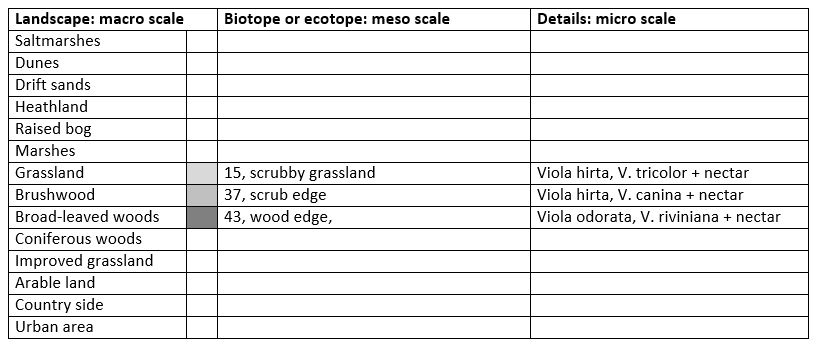
Fig. 111-3. Argynnis adippe, climate matrix, heat-sums 400 - 2000°d.
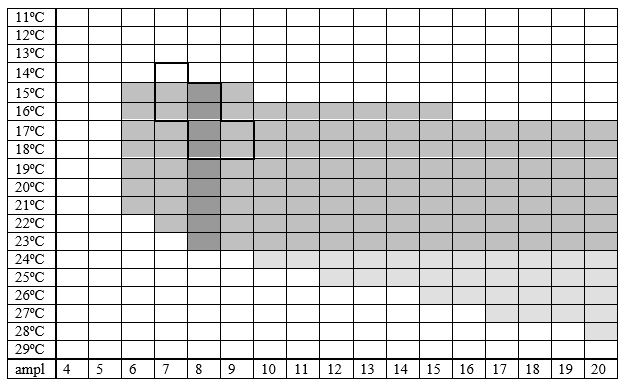
|










